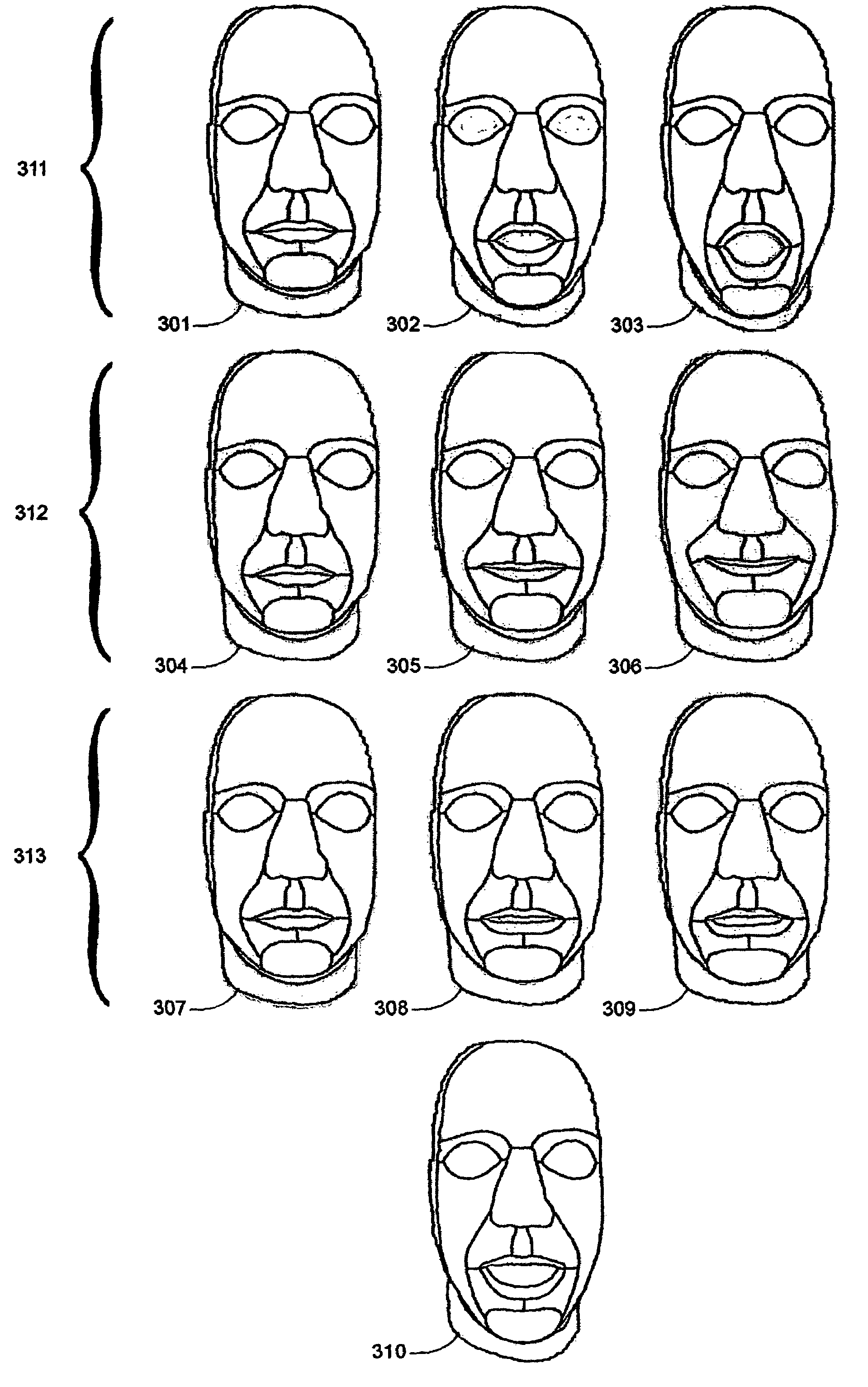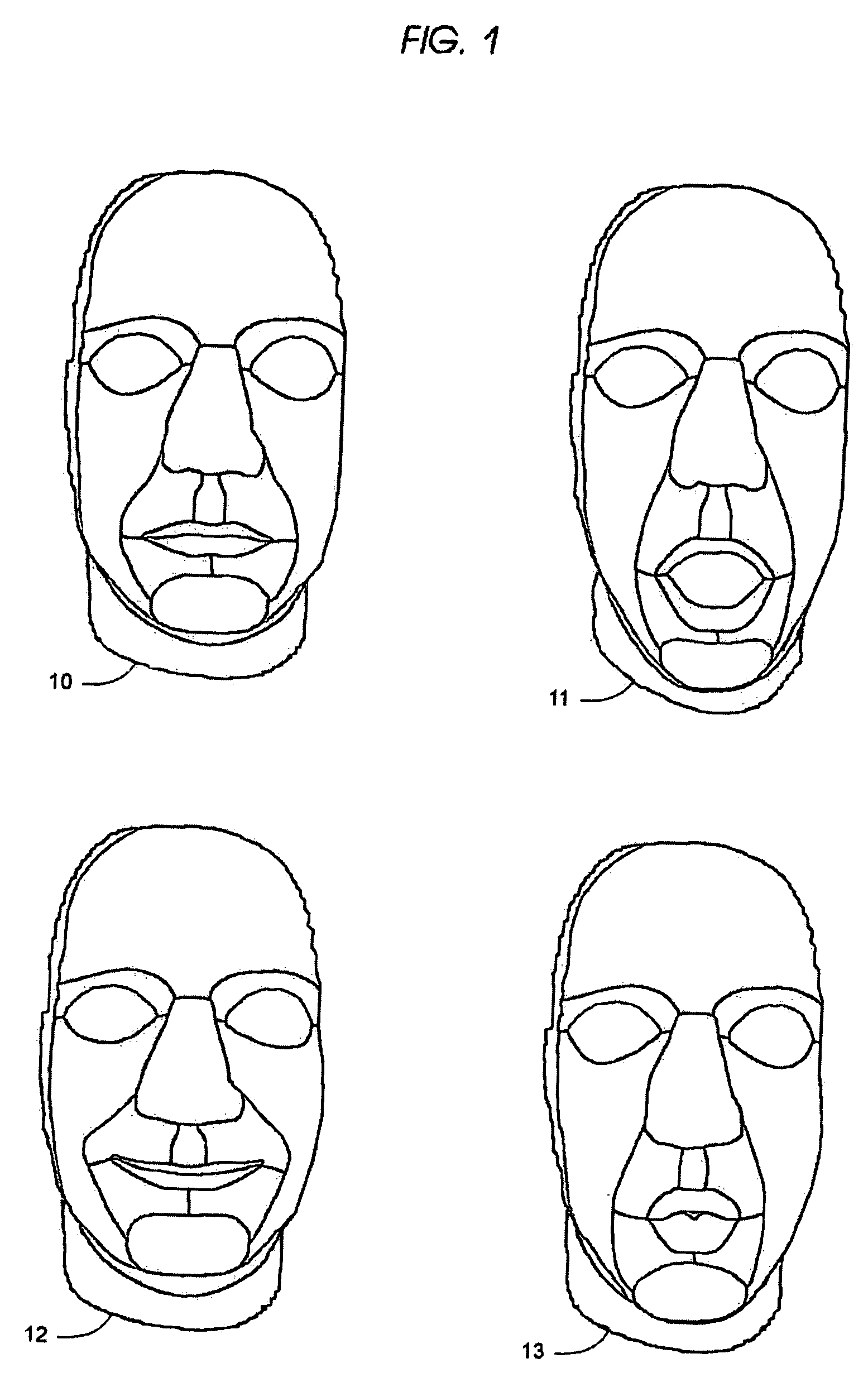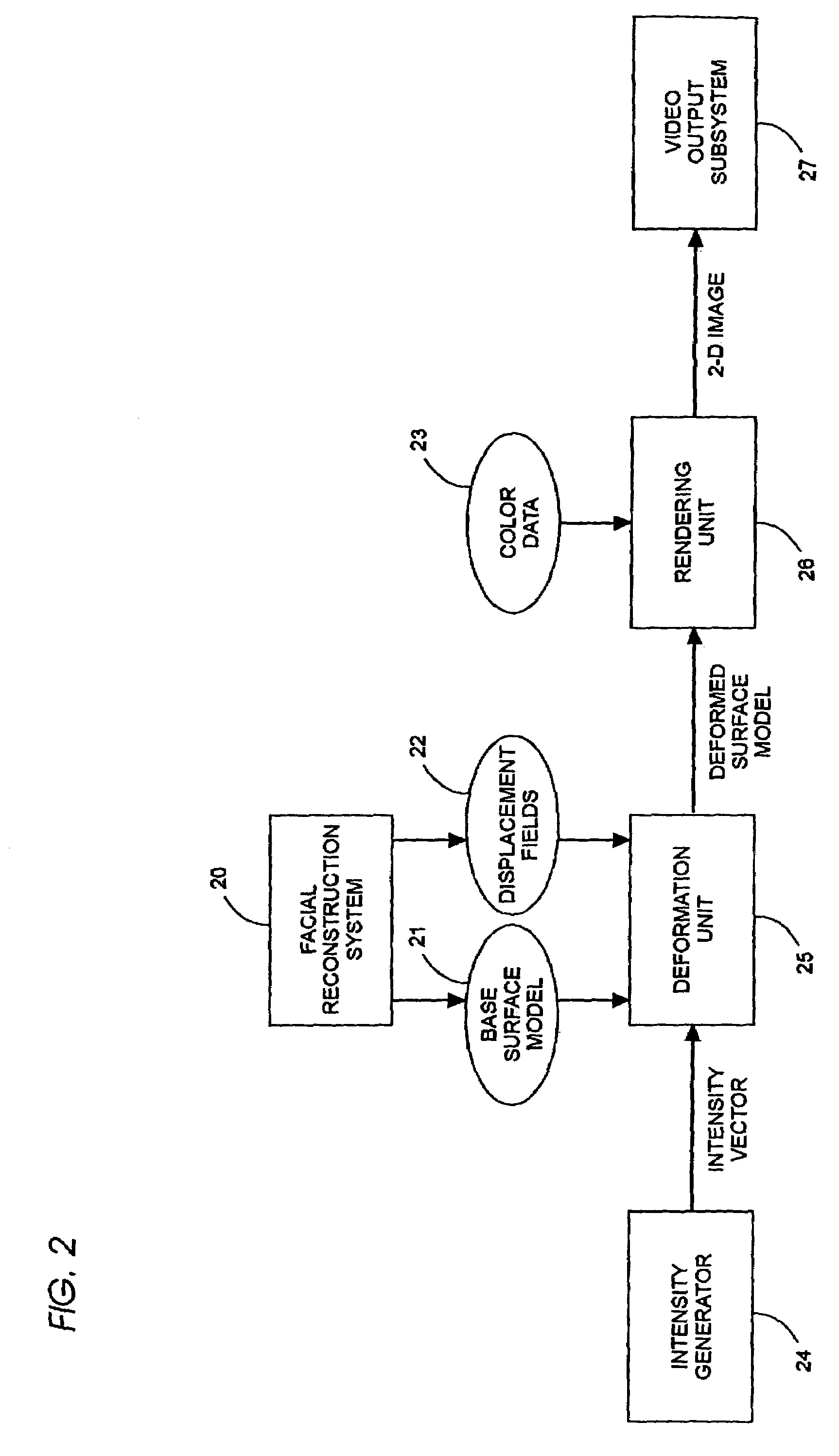Static and dynamic 3-D human face reconstruction
a dynamic and dynamic technology, applied in the field of three-dimensional (3d) modeling and animation by computer, can solve the problems of significantly less labor and skill, high-fidelity reconstruction of the actor's fa
- Summary
- Abstract
- Description
- Claims
- Application Information
AI Technical Summary
Benefits of technology
Problems solved by technology
Method used
Image
Examples
Embodiment Construction
[0041]Following are definitions of terms and notation used in this description.
Topological Models
[0042]A “topological model” or “graph” is defined as a set of points, called “vertices,” and a set of connections between pairs of them, called “edges.” An edge between two vertices i and j is represented as a set {i,j}. Formally, a graph G is herein defined as a set comprising the union of[0043]i) a set of vertices, denoted V(G), and[0044]ii) a set of edges, denoted E(G),
where V(G)=∪E(G). A “sub-graph” H of G is a graph such that H⊂G.
[0045]Given a graph G, a “path” H in G is a sub-graph H⊂G with edges of the form E(H)={{i0,i1}, {i1,i2}, {i2,i3}, . . . , {in−1,in}}. The vertices i0 and in are called the “terminal vertices” of the path. The path is called a “cycle” if i0=in. G is called “connected” if for every pair of vertices i and j in V(G) there exists a path in G of which i and j are the terminal vertices.
[0046]A “triangle” in G is a cycle of three edges connecting three vertices—for...
PUM
 Login to View More
Login to View More Abstract
Description
Claims
Application Information
 Login to View More
Login to View More - R&D
- Intellectual Property
- Life Sciences
- Materials
- Tech Scout
- Unparalleled Data Quality
- Higher Quality Content
- 60% Fewer Hallucinations
Browse by: Latest US Patents, China's latest patents, Technical Efficacy Thesaurus, Application Domain, Technology Topic, Popular Technical Reports.
© 2025 PatSnap. All rights reserved.Legal|Privacy policy|Modern Slavery Act Transparency Statement|Sitemap|About US| Contact US: help@patsnap.com



